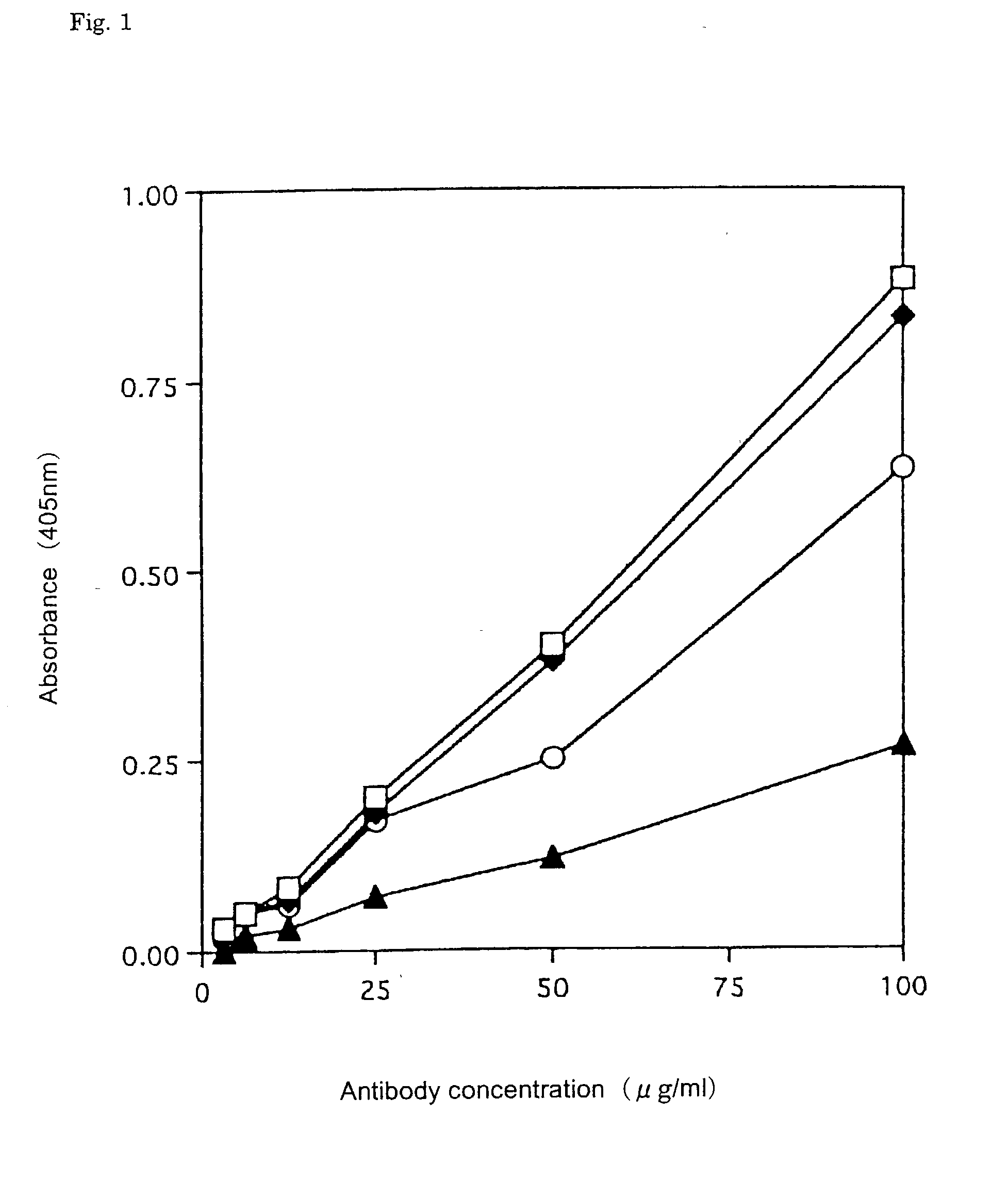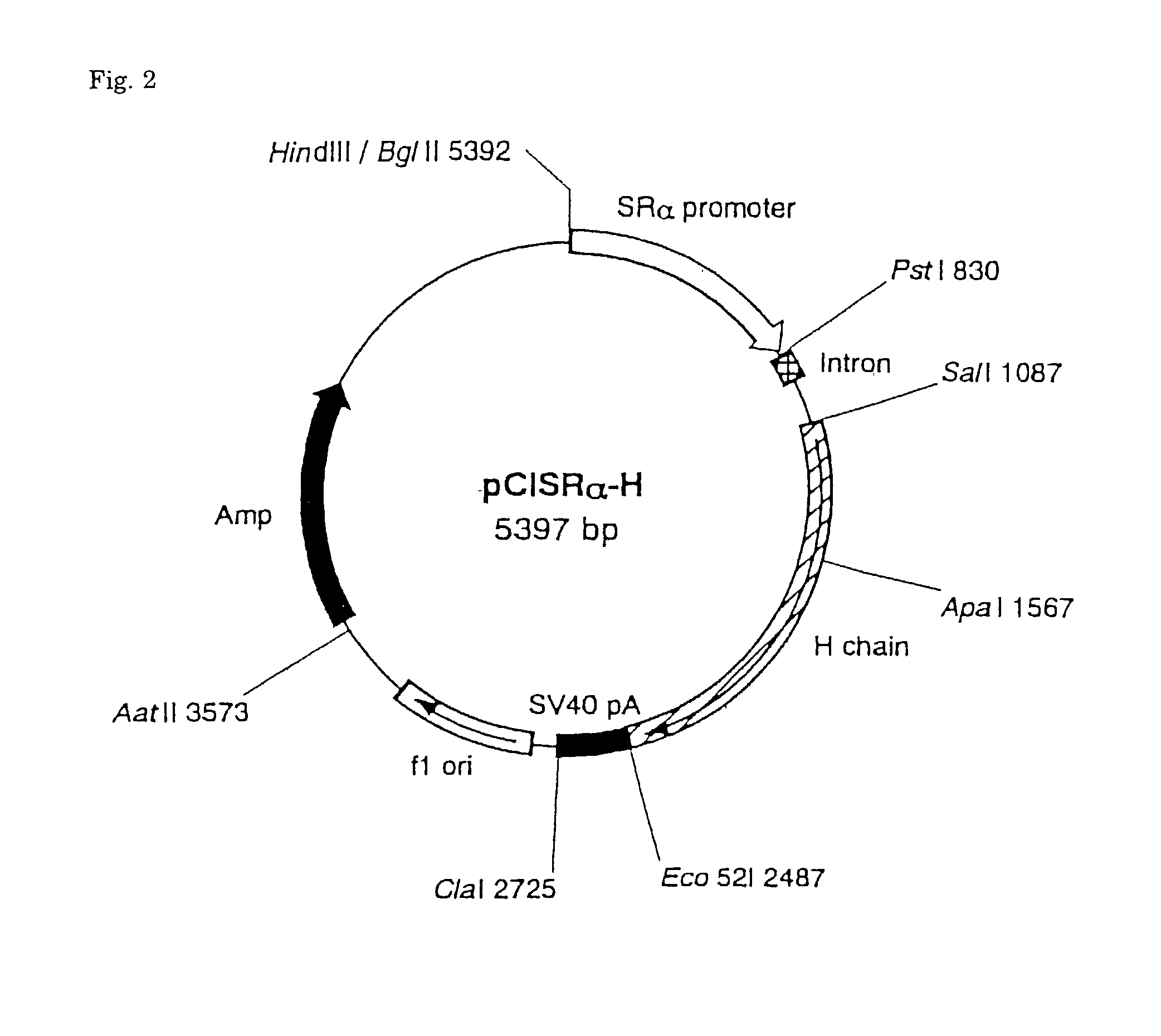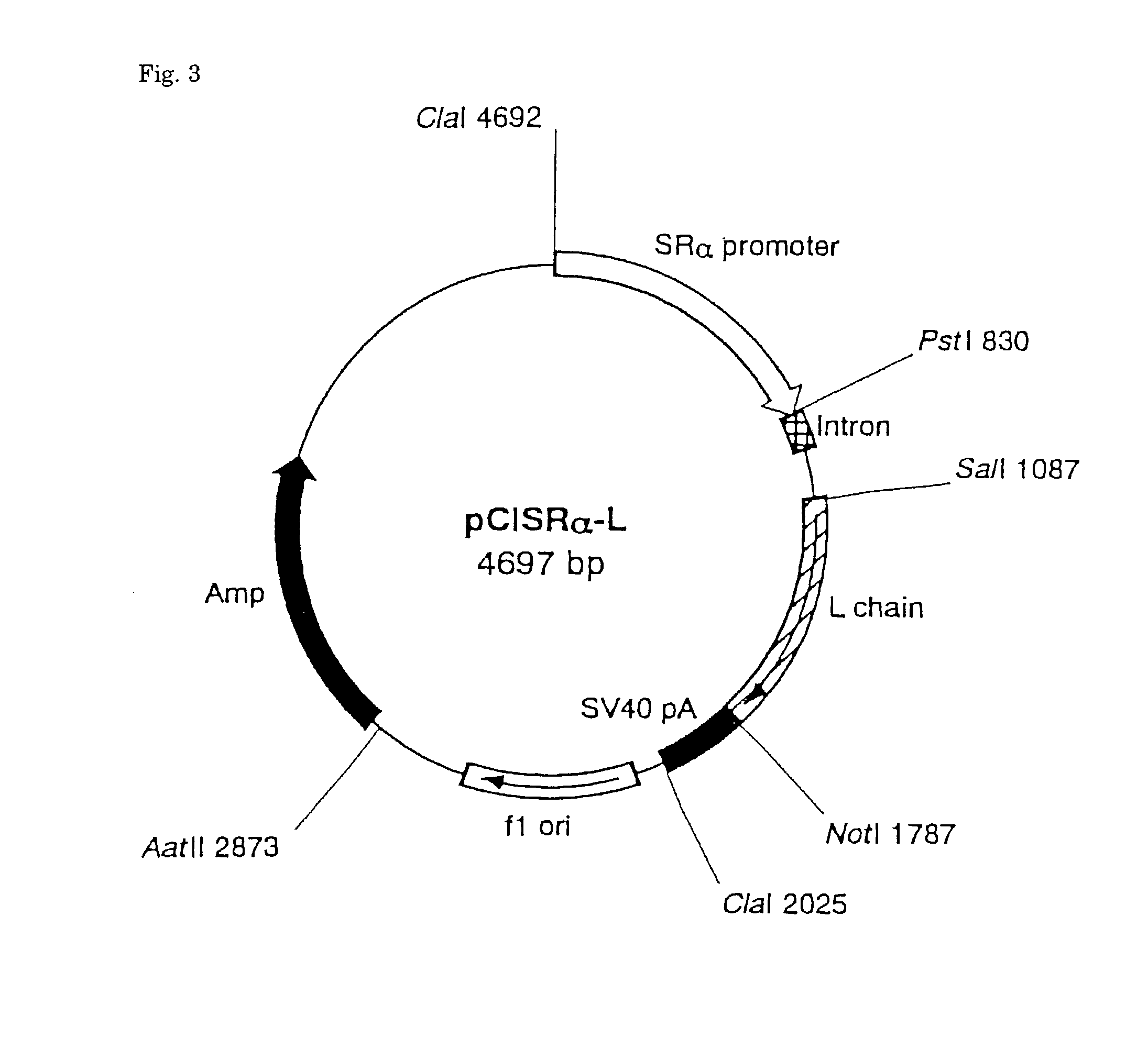Novel peptide and screening method by using the same
a screening method and peptide technology, applied in the field of new peptides and screening methods by using the same, can solve the problems of limited human use of mouse mab as a remedy, mabs causing undesirable immune responses, and limited application of antibodies as a remedy for diseases
- Summary
- Abstract
- Description
- Claims
- Application Information
AI Technical Summary
Benefits of technology
Problems solved by technology
Method used
Image
Examples
example 1
[0081]
[0082] (1) In vitro Antigen Sensitization
[0083] Peripheral lymphocytes obtained from two healthy persons with different allotypes were melted at 37.degree. C. and washed twice by centrifugation (for 10 minutes at 250.times.g) using RPMI-1640 culture medium (Gibco BRL Co.). The same number of lymphocytes were mixed and suspended in a culture medium containing 2.5 mM leucine-o-methyl ester (Aldrich Co.). The suspension was allowed to stand for 40 minutes at room temperature. The cells were washed with a RPMI-1640 culture medium and suspended in the RPMI-1640 culture medium to a concentration of 10.sup.7 cells / ml. Muramyl dipeptide (40 .mu.g / ml; Sigma company), human IL-4 (100 U / ml; Peprotech Co.), and Human IL-6 (10 ng / ml; R&D Systems, Inc.) were added to the resulting suspension, which was charged to a 6-well plate, 2.5 ml per well. Various amounts (0.1-10 .mu.g) of sensitized antigen (human IgE; The Scripps Research Institute) were added and the mixtures were allowed to stand...
example 2
[0086]
[0087] The antigen specificity of the antibody produced by the hybridoma was examined by the ELIZA method for each well in which cell growth was recognized. Human IgE (2 .mu.g / ml) dissolved in 0.1 M NaHCO.sub.3 (pH 9.6) was added in an amount of 100 .mu.l per well, and the antigen was immobilized on a membrane (Biodyne A; German Science Co.) by suction. Next, 200 .mu.l of 2% bovine serum albumin (BSA) / 10 mM phosphate buffer solution (pH 7.4) in 0.15 M NaCl (PBS) was added to each well to block remaining binding sites. After the addition of 100 .mu.l of a supernatant of cultured medium, the mixture was reacted for 2 hours at room temperature After washing with PBS-0.05% Tween 20 (PBST) four times by suction, 100 .mu.l / well of alkali phosphatase (AP)-labeled goat antihuman IgG antibody (Capel Corp.) diluted to 10,000 fold with 0.5% BSA / PBS was added in order to detect the bound antibody, followed by reaction for two hours at room temperature. After washing with PBST four times ...
example 3
[0092]
[0093] Hybridomas producing four antibodies grown in a RPMI-1640 culture medium containing 5% FCS were washed three times with PBS, respectively, and suspended in a serum-free RPMI-1640 culture medium to a concentration of 10.sup.6 cells / ml, and incubated for 3 days in 5% CO.sub.2 incubator at 37.degree. C. Ammonium sulfate (Nacalai Tesque Co.) was added to the supernatant of cultured medium centrifugally obtained to a final concentration of 40%, the pH was adjusted to neutral, and the mixture was allowed to stand for one hour at 4.degree. C. to effect salting-out. Precipitate obtained by centrifugation (7000.times.g for 20 minutes) was dissolved in a small amount of PBS and dialyzed against PBS at 4.degree. C. to remove ammonium sulfate. Finally, after dialyzing with a 20 mM phosphate buffer solution (pH 8.0), insoluble matters were removed by centrifugation, and the sample was filtered. NaN.sub.3 was then added to a final concentration of 0.02%. The sample was applied to Pr...
PUM
| Property | Measurement | Unit |
|---|---|---|
| Volume | aaaaa | aaaaa |
| Volume | aaaaa | aaaaa |
| Volume | aaaaa | aaaaa |
Abstract
Description
Claims
Application Information
 Login to View More
Login to View More - R&D
- Intellectual Property
- Life Sciences
- Materials
- Tech Scout
- Unparalleled Data Quality
- Higher Quality Content
- 60% Fewer Hallucinations
Browse by: Latest US Patents, China's latest patents, Technical Efficacy Thesaurus, Application Domain, Technology Topic, Popular Technical Reports.
© 2025 PatSnap. All rights reserved.Legal|Privacy policy|Modern Slavery Act Transparency Statement|Sitemap|About US| Contact US: help@patsnap.com



